Eurail Passes are famous as a way to save money while exploring Europe, but they are also confusing and often misunderstood. They are still an amazing money-saving tool for certain types of travelers, and not a wise idea for most others. Before Europe introduced dynamic rail pricing (like airfares, where the price varies depending on when you buy it), a Eurail Pass was an easy way to save money since all tickets had fixed prices that were generally fairly expensive. These days most travelers can save far more money just by buying their train tickets at least a few weeks in advance.
That said, Eurail Passes are still great for longer trips and especially for people who like to make plans as they go. Dynamic rail pricing made advanced tickets much cheaper, but it also made last-minute tickets MUCH more expensive. Below we will discuss Eurail Passes and whether they are a good idea for your trip or not.
Disclosure: This is a reader-supported website and some of the links are affiliate links where a small commission is paid to help keep this site going.
Note: This article was written in 2012 and has been continuously updated since then, so all information is current as of April, 2024.
Eurail 2024 changes: New countries and a mobile version

Aside from that it’s just the normal fact that they have updated the timetables as of December 2023 and have a few promotions going on, but those usually don’t happen over the busy summer season.
Eurail passes are now available in a mobile version
Until very recently, Eurail Passes were only available in paper form and they were quite confusing at first. You’d get a pass with a series of empty boxes on it and you’d need to enter your trip before you’d use your pass each day and then have the first conductor verify it. If you lost your ticket (and this was not uncommon), it was a whole ordeal to attempt to get a replacement.
Again in 2024 Eurail offers a fully mobile version that is delivered instantly to your mobile device with no delivery fee. And if you somehow lose your phone, you can resume using your Pass on your replacement with no extra headache. This is MUCH more convenient in every way and as long as you can keep track of your phone you’ll always have your train pass handy.
If your trip will be 2 weeks or less, a Eurail Pass probably won't be worth it
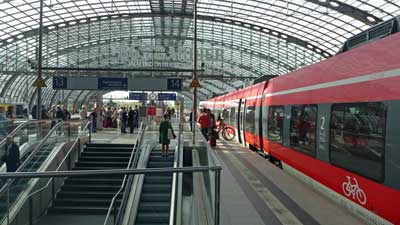
Eurail Passes are ideal for travelers on longer trips, and especially those who don’t want to plan all of their destinations and dates far in advance. If you have your itinerary pretty much planned out and you don’t require much flexibility, you’ll be far better off just locking in your dates and buying your train tickets as early as you can. Again, they can be surprisingly cheap if you buy 2 to 4 months out.
If you are age 27 or younger, a Eurail Pass is probably worth it

With this in mind, if you are lucky enough to still be 27 or younger, you should seriously think about getting a Eurail Global Pass Youth, partly because the sense of freedom instantly gets more expensive at age 28. The age cutoff was 25 until recently, so this change is a great deal for anyone who will be 26 or 27 at the start of their trip.
You aren’t guaranteed to save money by buying a Youth Eurail Pass, but chances are good that you WILL save money and you’ll definitely save a lot of hassle as well. Especially now that Eurail Passes come in a mobile form, it’s even that much more convenient to just hop aboard any train that is about to leave the station and not worry about buying or even having a ticket. Especially for young people, it can be really fun and exhilarating to literally just walk into a train station with your backpack and look at the departure board and then decide where to go at that moment.
If you are age 60 or over, a Eurail Pass could also be great value
Another fairly recent change is that anyone who is 60 years or older at the start of the use of a Eurail Pass now gets 10% off the normal adult fare. That new discount is going to make this a great value for many travelers who might have been on the fence about buying a full-price pass before.
>>>Check prices on Eurail Passes
If you are planning on traveling in 1st Class anyway, a Eurail Pass is probably worth it
Most 2nd Class trains provide similar comfort and legroom to Business Class airline seats, or at least close enough, so for most people it’s not worth the added expense for 1st Class. However, if you are rich or elderly or fear contact with strangers, a 1st Class Eurail Pass is probably worth it no matter what.
Not only do you get much more comfort and legroom in 1st Class, with only 3 seats across instead of 4, but there is another advantage to 1st Class on European trains. Since it’s mostly business travelers and wealthy people traveling in 1st Class, the carriages are almost always mostly empty except in the mornings and late afternoons between large cities. In 2nd Class the only available seats might be two seats in an 8-seat cabin with all the other seats taken up by a loud family or a group of rowdy friends. In 1st Class you are all but guaranteed a peaceful ride, and usually plenty of empty seats from which to choose.
A hidden Eurail Pass benefit: Making extra stops on travel days for free

Brussels in particular is one I recommend a short stop in because the small historic center around what they called the Grand Place is amazing and gorgeous, while the rest of the city is rather boring by European standards. With a Eurail Pass you can jump off the train in Brussels and explore the city center for a few hours (luggage storage is cheap and easy) and maybe have lunch, and then hop on a later train to complete your journey to Amsterdam. There are opportunities like this on many if not most trips between larger cities, and if you buy the point-to-point tickets you have to stay on the train you booked.
Another example is the high-speed train between Barcelona and Madrid, which takes about 2.5 to 3 hours in each direction. There are some interesting cities in between, but in this case you could take a morning train from Barcelona to Madrid and then check into your accommodation, and then hop on another train from Madrid to Toledo, which takes about 30 minutes and costs €14 each way. Toledo is a historic and fascinating town, but it’s also pretty small and you can explore the main sights in an afternoon. With a Flexi Eurail Pass where you buy a certain number of travel days, you can save more money by adding on these sorts of nearby stops on travel days.
If you'll be touring major cities within ONE country, a single-country pass might be perfect, and Second Class passes are available for all ages
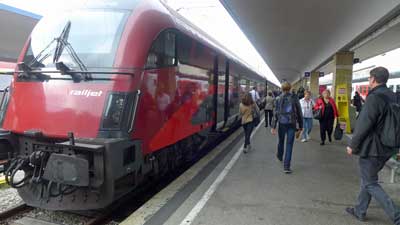
Single-country passes are still available and they MIGHT be good value for you, but it depends on which country and how much traveling you’ll be doing. If you plan on going all over a larger country such as Germany, France, or Spain, and especially if you like to make plans as you go, a Single-country pass for one of those might be your best deal. On the other hand, smaller countries (such as the Netherlands) or countries where train tickets are already fairly cheap (such as Italy) might be harder to get value out of. Long story short, for single-country passes you really need to check fares of the places you plan on going and see how they add up compared to the pass.
>>>Check prices for Single Country Passes
Eurostar (between London and Paris or Brussels or Amsterdam) tickets are now included for Eurail Pass holders for a €30 reservation fee
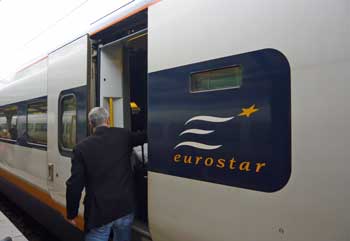
Our recent tests show that Eurostar fares one-way from London to Paris can be as low as €49 if you book about 3 months out, or as expensive as €214 for the same seat if you wait until the day of travel to buy. Round-trip/return tickets can be even cheaper if there is a promotion running.
>>>Check Eurostar prices
If you are on a really low budget, a Eurail Pass isn't a good idea
Here’s the thing. As we’ll discuss below, there are many potential benefits to Eurail Passes, and they will often save you money, but they do cost a lot and they only really save you money when traveling in the more expensive countries.
So let’s say you have a flight to Rome and then US$2,000 to last you a month after you arrive. Buying a Eurail Pass before you go would help you see a lot in that month, but you’d practically need to sleep in parks for your funds to last the whole time. You’d be better off moving slowly in the southern countries, or just in Italy itself, as a way to have the best holiday on your budget. You might also be tempted to use a Eurail Pass mostly on night trains so you can save the cost of a hotel or hostel, but those aren’t ideal for most of us.
The cheapest way to get around Europe by rail is to buy all train tickets online at least a couple months in advance. The fares are low, but they are non-refundable and non-changeable. See how far in advance you should buy train tickets to get those attractive fares.
If more than a little of your travel will be in eastern Europe, a Eurail Pass isn't a good idea
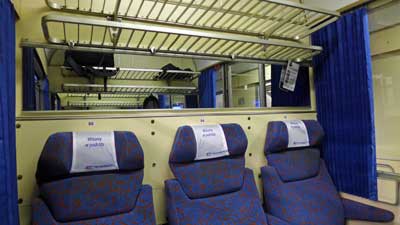
The good news is that the trains operating in this region, and the buses that operate alongside and/or where trains aren’t running, are quite cheap. So if any significant part of your trip will be into this region, a rail pass doesn’t make sense.
Basic types of Eurail Passes
Long gone are the days of the simple options, replaced by specialized passes that are meant to appeal to different styles. It should be pretty easy to figure out which is best for you, and then keep going down the page to decide if it’s worth it at all.
Eurail Global Pass – 4,5, or 7 days within 1 month or 10 days within 2 months
Until recently the minimum number of travel days with 10 days within 2 months, but now you can buy as few as 4 days within 1 month for about €200 to €250 (for first class). This can actually be an interesting strategy if you are planning many shorter and cheaper trips (like within Italy or Eastern Europe), and also 4 or 5 longer trips such as Berlin to Amsterdam. This way you can buy only 4 or 5 travel days and only use them for your most expensive travel days, and just pay as you go or buy cheap advance tickets for your other journeys.
Eurail Global Pass – 15 to 90 consecutive days
This variation allows for unlimited travel on the system for between 15 and 90 total days. They are really only a good idea for people who are certain they are going to travel very often, with much of it being in the north of Europe. The problem with them is that if you really try to get your money’s worth, you will probably ruin your trip by spending too much time on trains in general. On the other hand, if you will be in Europe for 2 or 3 months and plan on traveling around a lot, you can get a LOT of use out of a longer pass. The 3-month pass is around €900 so it’s literally about €10 per day. Imagine going back and forth between Berlin and Munich or Barcelona and Madrid for €10 per day!
One Country Pass
Obviously these are for travel within one country only. Again, they can be great deals if you plan on extensively moving around one particular country.
Where to buy your Eurail Pass
Eurail Passes are cheapest and easiest to buy online, primarily from two main sources which offer all the same products at the exact same prices:
This is a reliable company based in the Netherlands but with fulfillment offices in the US and Ireland. Price of Travel is a partner with this company, and if you use the links of this site we earn a small commission to help keep this site online. Eurail.com is usually cheaper than RailEurope (discussed below) by the way.
They were founded in the 1930s and are based in New York, but owned primarily by the French and Swiss rail companies. They offer free shipping (2 to 3 business days) on all orders of US$399 or more, although now that a mobile version is available, this is meaningless. Price of Travel is a partner with this company, and if you use the links of this site we earn a small commission to help keep this site online.
Reservations on European trains for rail pass holders
For most of the fastest trains between major cities you’ll need to reserve a seat even with a rail pass. It can usually be done just before you leave and the cost is usually around €5. Here’s a full list of which European trains require reservations and which don’t.
Reservations are required on all intercity (longer distance) trains in or involving France, Spain, Switzerland, and Italy. For most trains in Germany, Austria, Netherlands, Belgium, and most of eastern Europe, you can usually find trains that don’t require seat reservations. Often, if you don’t leave until after 9:30am or so, you can ride on any train with no seat reservation, but you have to research each leg to be sure.
How to determine which trains require seat reservations, and also get schedules
You can click on the link just above this section for a list of countries and their seat-reservation policies, but in some cases it’s actually a bit more complicated than that. For example, you can generally ride without a seat reservation on fast ICE (Inter City Express) trains in Germany if you depart after 09:30 in the morning. They do this to free up seats for business travelers who pay full fare, and they don’t mind filling up seats with rail pass holders on trains leaving a bit later.
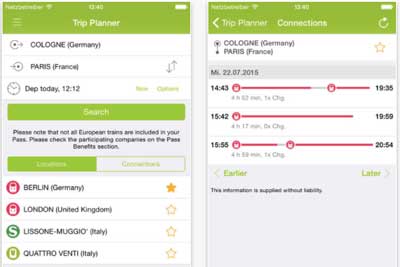
Night trains in Europe are making a comeback
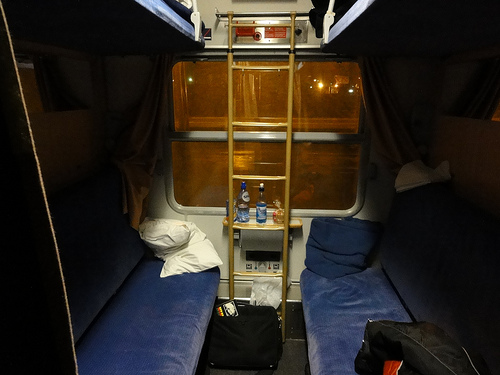
Fast forward to 2024 and night trains are not only expanding service, but they are very trendy. Some of it is nostalgia for the older way of getting around, but most of it is for environmental purposes combined with European hatred for the “low cost airline” experience with RyanAir and Easy Jet etc.
Personally I’m still not a fan of night trains because I find it difficult to sleep on them since they often get decoupled at interim stations in the middle of the night and then coupled onto other trains coming from other places, and I can’t sleep through any of that. But still, they are worth looking into and they are fun to try at least once.
A bit of warning that they tend not to be cheap and even if you have a Eurail Pass you’ll almost certainly want to book a sleeping cabin with a bunk or couchette, and that will come at an extra fee. On the other hand, if you are the sort of person who can sleep sitting upright in a normal seat, then that won’t cost any extra on most overnight trains.
Factors to consider when thinking about any Eurail Pass
Assuming you know which Eurail Saver Pass option is the best one for your type of trip by now, we’ll go over the main factors that should help you decide whether it’s the best idea for you.
Eurail Passes are best for standard ‘medium length’ journeys

However, if you are determined to travel between Rome and Paris, it’s about a 14-hour journey that will almost certainly be overnight. In this case, a cheap plane ticket is probably better, although taking shorter hops on the train is even better, so spend a day or two in Milan or Lyon on the way instead.
And of course, if you prefer to stop in various small towns between the big ones, then a Eurail Pass won’t pay off, except for the traditional kind for unlimited travel in a given period.
Eurail Passes are better value in northern Europe, France, and Spain, and poor value in Italy
Once you do a bit of research you’ll quickly learn that train tickets (and almost everything else) are much more expensive in Germany, Netherlands, Denmark, Sweden, Norway, and Finland than they are in Greece, Italy, Portugal, and Spain. With this in mind, the regional passes can make sense if you are spending time in the south, but the Global Passes almost certainly won’t. Train tickets in Spain used to be fairly cheap, but in recent years they’ve added new high-speed trains between the major cities, and these are quite expensive.
Unlike most other countries, Italy really subsidizes its train tickets so they are quite reasonable even on travel day, and very cheap if you buy a month or more in advance. For example, you can go between Rome and Florence for around €49 if you buy on travel day, and as little as €19 if you buy well in advance. In most other countries, fares are double or triple that much for similar rides.
So consider your planned itinerary. If more than half of it is in the Mediterranean countries then look into a Regional Pass or just buy tickets as you go, because they tend to be pretty cheap. But if you are planning on spending at least half your time in Paris and places to the north of it, then a Eurail Pass is probably a money saver because those tickets are expensive.
Trains are almost always better than planes
Flying sucks, even in Europe
Until you’ve experienced the joy of traveling around Europe by train you might be tempted to “maximize” your time by flying low-cost airlines between each city. This would be a mistake. In order to get truly cheap airfares you have to purchase long in advance, buying non-refundable tickets. You might also have to commit to flights in the very early morning or in the late evening, because cheap tickets on convenient flights sell out quickly.
And again, most European airports are around an hour outside of the city. They are often on the main train lines, which helps, but still you have to deal with the madness of security and also try to get there at least two hours early. From one city center to any other city center it’s about 5 hours minimum, even if they are close, and those are pretty miserable hours.
Train travel is a positive experience

Not only are all the seats comfortable on trains, but you also have an interesting view most of the time. Better still, trains deposit you in the heart of every city, which is usually the neighborhood with the cheapest hotels and food. It’s a wonderful feeling to step off a relaxing train ride, buy a hot dog or sandwich at a local shop, and then be in your hotel room only about 10 minutes later.
Eurail Passes are better than train tickets alone
As someone who enjoys the process of crunching numbers and looking for value, I have to also mention that I’d buy a Eurail Pass even if it seemed like it would cost a bit more than the individual tickets. With a pass you get an extra element of freedom that is worth a lot more than you might expect until you’ve used one.
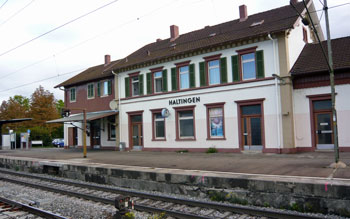
Let’s say you are heading from Amsterdam to Hamburg tomorrow morning. The 09:00 train you planned for might seem a bit ambitious after a long night out, so you can instead opt for the 10:00 or 11:00 train. As long as you walk into Centraal Station 10 or so minutes before departure, you are on. If you are flying you can’t change your ticket, and if you are buying train tickets as you go you have to be in line at the international desk at the train station at least 30 minutes early, and even then you might miss it if they are busy.
Freedom and getting to feel like a big shot
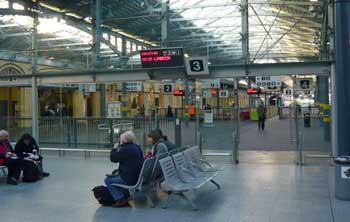
Let’s say you are staying at a hostel in Brussels, and two groups of new friends suggest that you go along with them to their next stops. One group is going to Bruges, which is a short and cheap journey, so you can join them by buying individual tickets (unless you have the unlimited pass, making it free). Then you restart your trip from Bruges, on to your next destination. The other group is headed to Berlin on a night train, which is long and expensive, but with a Eurail Pass you don’t even have to think about the cost. On you go, just like a rich person.
Buying a Eurail Pass is great for those who might run out of money
We all know people who keep meticulous track of every penny they spend, and who are always putting money away for a rainy day. And we all know people who can take a US$100 “entertainment fund” and burn through almost all of it in just a few hours. For the first type of person, a Eurail Pass can help you keep track of expenses, but it’s really the second type of person these are best for.
It’s sad to hear about people who have big plans to see their dream destinations, but they run out of money for transportation halfway into the trip, so they have to just stay put until they fly home. It happens. Locking in your major transportation costs before you leave home, and probably saving money in the process, is a wise move for anyone who isn’t as disciplined as they’d like with their money.
>>>Check prices on Eurail Passes
Bottom line: If you want to keep travel costs down, your choices will usually be a Eurail Pass or buying tickets at least a month or more early
In the last few years, almost every long-distance train ride in Europe has switched to a pricing system similar to low-cost airlines. In other words, tickets go on sale 2 to 6 months ahead of time at very low prices, and they keep getting more expensive as the train fills up and the date approaches. For most trips where a rail pass is possible, this is how things stack up:
Cheapest possible way: Buy advanced (non-refundable, non-changeable) train tickets at least 30 days in advance
Next cheapest way: Buy a Eurail Pass and make seat reservations as you go, usually only a day or less in advance.
Most expensive way: Buy train tickets as you go, or less than a week in advance.
Thinking about it this way should make the choice a bit easier. If you are the type who likes to plan each day and travel segment long before you even leave home, then buy tickets online for the best prices. This can be the best strategy for most shorter trips (10 days or less) because you simply don’t have enough time to change many things as you go anyway.
Buying a Eurail Pass won’t be quite as cheap, but you are buying a LOT of flexibility with the extra money. If you dream of making up your plans as you go, or even making up your plans just a few days in advance, this is almost always your best bet.
But if you wait too long, and just show up looking to buy train tickets as you go, they are going to cost a fortune. As recently as only a few years ago all seats would be the same price on many rail systems, so you could always just wing it. When each country computerized its rail systems so they can sell advanced tickets cheaper, they also had to keep track of seat reservations, so the whole pricing structure had changed to favor advanced ticket buyers and rail pass holders over those who’d prefer to just hop on any train as it is leaving the station.
Have a rail pass or itinerary question of your own?
It wasn’t planned but scores of people began asking me rail pass and itinerary questions at the bottom of this article and a few others. I’m happy to keep answering them and now I’m trying to organize them better as well so they are easier for other people to find.
If you have a question about specific types of European rail passes, please ask it in the comments below.
But if you have a question more about a European itinerary or other non-rail-pass questions, please click over to the European itineraries Q & A article and ask in the comments of that one.

Dear Roger,
I have checked blogs related to your recommended itinerary and I am fine with this. Looks really interesting and I am locking it for my family trip.
Prague > Krakow > Budapest > Salzburg (or Vienna) > Berlin > Prague
Now, if you are suggesting to buy rail pass (Euro 782/6Days) how best I can utilize it for the suggested route otherwise please suggest how I will go to one place to another and how many days I should spend in each place and the must visit places in each city.
Trip total duration is 2 Weeks (inclusive of departure and arrival Friday to Friday)
Kash,
I’d recommend 3 nights in each city, except 2 nights should be enough in Salzburg because it is smaller than the others. If you do it this way then you’ll only need 5 train rides so hopefully you can get the smaller Eurail Pass. The train is the best way between each of these places, especially with a family.
When you are looking at specifics for each city you’ll see the most famous and obvious tourist attractions. I even list the prices for most of them on the pages on this site if you look for each city under the Europe drop-down on the top of each page. A general tip I will provide is that you should do a “free” (tips-based) walking tour in each city on your first morning there. You can tip about €5 or €10 for your group and you’ll get an up-close look at the best attractions and a very entertaining history of each city. Have a great trip. -Roger
Hi Roger,
I am planning a back packing trip to Germany and Czech Republic this summer with the following itinerary:
1. Frankfurt – 2 days including Rhine Valley
2. Cologne – 1 day
3. Berlin – 4 days including Potsdam
4. Prague – 3 days
5. Cesky Krumlov – 1 day via Cesky Budejovice
6. Dresden – 2 days (reach via Plzen)
7. Leipzig and Rothenburg ob der Tauber – 3 days including day trip to Nuremberg
8. Munich – 4 days including day trips to Fussen and Dacau
9. Baden Baden and Black Forest – 3 days
10. Fly back home via Frankfurt
Options: a) German rail pass, b) Germany + Czech (2 country) Eurail pass, c) Buy tickets well in advance, and c) Buy tickets on the spot.
I am not keen on option c) as I would like to retain the flexibility to alter my travel schedule. Regarding option b) for Czech, I do note your comments that Eastern Europe may not have a decent rail infrastructure, and car rental (if shared with at least 3-4 people) or bus can be a quicker and cheaper alternative. Request your guidance as I feel the best option for me is to purchase a 7 day German rail pass and go for bus or car rental in Czech.
Cheers,
Neo
Neo,
This looks like a very well constructed and thought out itinerary. One thing though, if you plan to go in this order then you’ll be doing some unnecessary skipping around. If you went Frankfurt > Cologne > Berlin > Leipzig > Dresden > Prague > Cesky Krumlov > Nuremburg > Munich > Rothenburg ob der Tauber > Baden Baden > Frankfurt, then it’s much more direct and the train journeys will be shorter.
Clearly you’ve put a lot of thought into this itinerary, but I will mention one thing just in case. That’s that (for the vast majority of visitors) there is a big drop-off from destinations like Prague and Berlin to ones like Leipzig and Dresden. I spent a couple days in Dresden a few years back on a trip like this and it was kind of disappointing. Nearly all of the “historical center” was flattened in WWII and has been rebuilt to look like it used to look, but still I feel like it lacks charm and it definitely lacks any major sights. I’m guessing that you have a German background (like me and so many other people), so if you have specific things you want to see in those places then by all means go. But I’ve found through lots of trial and error that visiting large cities just because I’ve heard of them is not always worth it.
In case you haven’t seen it, you might want to have a look at my where to go in Germany article. You are hitting most of the highlights and I’m sure your trip would be great just as you’ve described, but this might also give you a possibility or two to consider.
The trains in the Czech Republic are okay, it’s just that they travel about the same speed as buses and are usually more expensive and less frequent than buses, so it’s worth looking at both options. I really wouldn’t want to rent a car to go from one city to another, mainly because parking is a real headache, so you will be tempted to stay in the suburbs, which kind of ruins a city visit.
With or without a rail pass, the trains and buses in the Czech Republic are quite cheap, so driving might even cost more even without the parking.
You seem to know your options well on the rail passes vs. buying way ahead of time, and I agree that it’s much more enjoyable to make plans as you go compared to booking everything before you even arrive. That luxury is worth more, so a rail pass might be your best bet. But again, compare the price of the German rail pass to the individual tickets on bahn.com and also factor in those possible bus trips in the Czech Republic. If you go the route I suggested you’ll actually be doing quite a few shorter journeys, which might only be around €20 or €30 each even if you buy a day or two before departure. Rail passes are better value for people going longer distances, so I’d run the numbers to see. I’m not sure if Germany offers it, but you might get a 5 days in 1 month version, which would cover your longer trips, and pay as you go for the shorter ones.
I hope this helped, and let me know if you have any other questions. -Roger
In May, my wife, 4 kids ages 9-18 and I are flying into Budapest for a half a day, and then taking a train to Prague. After 3 days, we’ll take a train to Salzburg for 2 days. We’ll take another train to Vienna from Salzburg. After three days in Vienna, we’ll take a train to Plavecký Štvrtok, Slovakia to visit great grandparent’s home town. From there that night we’ll train to Komarno to catch up with some friends. After walking across the border, we’ll take a train from Komarom, Hungary to Budapest. We thought buying a 4 country 5/6 day pass would be the best option, but after reading a lot of your blog, would we be over paying to get the europass versus buying them separately? We get one child free, 3 youths, and the 15% discount for first class, even though I don’t think there is any first class on our routes. None of our trips will be over night either. How do I find the direct purchasing websites to check out how much it is to buy on our own? What do you think? It would end up being $1500 for the europasses. thank you!
Steve,
My best guess is that you’d actually save money by buying the tickets individually. The train fares within Austria are fairly expensive, although the distances are small so the tickets aren’t really all that expensive. And through Hungary, Czech Republic, and Slovakia, the train tickets are always quite cheap compared to a rail pass.
However, as I mention so often, the trains in those countries tend to be relatively slow and infrequent, so buses are often a better option because they are usually cheaper, just as fast, and leave more often. Many of the buses in the parts of Europe that have slow trains also offer free wifi and are just as comfortable as trains. And in those areas, you’ll often have, say, 10 buses per day on a route that only has 2 or 3 trains per day. So it’s something to look into.
As for finding the official websites for the train companies, you can just Google “(country) rail” and the official company will usually be the first result. Here’s the Czech Rail site, for example.
For bus information you can Google “(city) to (city) bus” and the companies offering that service will usually show up on top. Or you might see a result from rome2rio.com, which summarizes the travel times of trains, buses, driving, or flying. It’s a handy way to see what the best option is, although it’s not always accurate. Let me know if you have any other questions. -Roger
Roger, you are a gem. I so appreciate your passion and thoroughness in your replies and suggestions. Also, your extremely timely reply was helpful. I stayed up late last night, and found that the difference in cost for family of 6 with europass of $1500+ versus buying separately, more like $500, was quite a difference. Could probably be even more if I took buses. Thank you and bless you!
Thankyou Roger for the detailed answer but after reading this i am worried and thinking to drop most of the countries/cities because i am travelling with my wife, 3 Year Kid, 2 suitcase and stroller. since you are full of experience we have decided to go with your suggestions.
-Our Arrival & Departure is thru Parague Airport
-Need to spend at least 2 days in each place (other than arrival / departure day)
-The Global Pass from http://www.eurail.com/ we are getting for Euro 782 for our family for 6 Days (5 + 1 Free Day)
– Can take rent a car to go some special/near by places
-Countries/Cities Wishlist if it comes in the suggested route (Nice cities/Places in Italy, spain, Switzerland, Amsterdam, Monaco)
-Can you please suggest the best itinerary for 2 weeks of travel.
-The idea is to see maximum but travel budget should be in control
-can i have your email also to discuss it further.
Thanks a million for your support.
Kash,
Sorry for missing this question the first time. I try to answer all the questions but sometimes one slips through the cracks.
I’ll try to help and I’m sure you’ll end up with a great itinerary, but it’s still a bit challenging with all of those wish-list cities so far apart. Again, it’s best if your train rides are in the 3 hours to 7 hours range, and if you want to go between distant cities, it’s usually best to fly.
Starting in Prague I think your next stop should be Austria. Your main choices are Vienna or Salzburg. Since you mention wanting to go to Switzerland then I think you’ll prefer Salzburg. It’s got a lovely old town area and a wonderful setting at the base of the Alps.
After that I’d recommend going to the Interlaken area of Switzerland for 3 nights. I explain exactly what to see and do in this article about places to visit in Switzerland. Your next stop could be Nice, France, which is only 20 minutes by train from Monaco, and it’s a very nice coastal city by itself. There are no affordable hotels in Monaco at all, and you can honestly see the main sights of the country in one day on a day trip from Nice. It’s really gorgeous so I do recommend it.
After Nice, or perhaps instead of Nice, you’ll want to head to Italy or Spain, but probably not both unless you’ve got at least 3 weeks for this trip. If you want to go to Spain then obviously you’d head to Barcelona for 3 days or so, and then take another train to Madrid for another 3 days. Both cities are large and quite different from each other, and both have many great day trips nearby in case you want to extend your trip.
If you decided to go to Italy then you can go from Nice to Venice and after 1 or 2 nights (Venice is small and crowded so you don’t want to stay longer than 2 nights), you could take a train to Florence for 2 or 3 days and then Rome for 3 days or so. If you have more time there are many great day trips from all of those. From Florence you can visit Pisa for a day or Siena or many lovely hill towns. From Rome you can visit Naples and even Pompeii.
From Madrid or Rome it’s probably best to fly back to Prague for your flight home because the train would take a LONG time and cost much more than a flight. And if you wanted to add Amsterdam you’d want to fly there and then fly to another of your stops. It’s just too far from the others to fit into a train journey like this.
That is just one set of ways you could do this trip, and if you have 3 or more weeks you could do all of the places mentioned. But you should really consider each of these possible stops and see how they sound to you. Think about it and feel free to comment again and I’ll try to help further. There are email addresses on the Contact page of this site, but I really prefer to answer these questions in public because other people find them useful. Keep in touch and I’m sure this is going to be a great trip. -Roger
Dear Roger,
thanks for detailed answer but just need your confirmation that have you considered my two major points (travelling with 3 Year Kid, 2 suitcase and stroller). With this travelling to 4-5 countries stations is fine and manageable? second, The Global Pass from (http://www.eurail.com/) we are getting for Euro 782 for myfamily for 6 Days (5 + 1 Free Day) so should i take rent a car or global pass is best.
third, if i forget my wish list than what is best itinerary for two weeks to eastern Europe (arrival/departure thru parague) by keeping my budget in control
Kash,
Renting a car to travel around Europe is rarely a good idea so I think you’ll be best off on trains. The problem is that parking in large cities is rare and expensive, which is done purposely to keep urban areas mostly clear of cars. In other words, if you want to park your car in the center of a large city you might have to pay €40 a day to do it, and you definitely don’t want to drive from one tourist attraction to another for the same reason. One alternative would be to stay at hotels at the edges of cities, which might have free parking, but that would mean traveling maybe an hour each way to go into town and back again to see the things you want to see.
The exception to this is if you want to visit small towns or wine regions or this sort of thing, where trains don’t really go and cars are the only way.
That sounds like a pretty good price on the Eurail Pass for 6 days for a family. Europe’s trains are very modern and tend to be family friendly. As discussed above, they are the main transportation for most citizens, so they are built to accommodate luggage and travel strollers and this sort of thing. You might have to sit in a special section to sit close to your stroller, but I don’t think it will be a problem.
If you wanted to know the route in eastern Europe where you’ll see excellent cities and sights for the smallest amount of money, I’d recommend Prague > Krakow > Budapest > Salzburg (or Vienna) > Berlin > Prague. Those are all great cities that are within reasonable distances of each other for train journeys. Salzburg and Berlin aren’t as cheap as the other 3, but they are both fairly affordable and worthwhile. If you wanted to do something like that itinerary you would save even more money by buying individual train tickets, or in some cases bus tickets. Transportation in that part of Europe is fairly cheap, and even cheaper if you buy your tickets online in advance from the official websites. For example, go to bahn.com for fares in and out of Berlin, and you’ll be able to see fares for some of the others on that (the official German rail) site as well.
The itinerary I mentioned is something to consider, but only if those cities sound interesting to you. You can also do Cesky Krumlov in addition or instead of Salzburg and it would be even cheaper. Keep in touch and I’m happy to continue to try to help. -Roger
Dear Sir,
i am planning to buy EURail Global pass with 6 days (as per offer). i was thinking with this pass i can virtually go anywhere any time but i am confused about reservations and night trains additional fees. if i have global pass for myself and my wife and kid how much extra i need to pay for following journeys:
Prague->Amstradam->Spain (Madrid/Barcelona)->Monte Carlo->Geneva/Zuric->Rome/Venice->Prague
Kash,
The seat-reservation system is very confusing, so you are not alone. At first glance, I think your bigger problem is that several of your train journeys are going to take a LONG time. From my own vast experience with this, a train ride up to 7 or maybe 8 hours can be pleasant, but after that it becomes a real drag. I’ll go over what you have listed here…
First off, all night trains require an extra seat reservation fee, which ranges from around €5 for a standard seat, to about €20 to €30 for a bunk. Read more about it in my article about night trains. You also need to be aware of the “7pm rule” which means that any night train leaving after 7pm will only use one rail pass day (officially, the arrival day), so if you leave at 19:30 and arrive at 08:00, it only uses one day on your pass. But if you leave before 7pm/19:00, then you’d need to use two days. In other words, you have to leave after 7pm, and on the really long routes that could mean not getting into your destination until after noon.
Prague to Amsterdam takes about 11 to 12 hours during the day or 16 to 17 hours overnight. You need a seat reservation on some day trains, but not all of them, and on all night trains.
Amsterdam to Barcelona takes about 12 hours during the day or about 19 hours overnight, and you need a seat reservation on either. Honestly, I’d fly on that one.
Barcelona to Madrid takes about 3 hours and you need a seat reservation of around €5.
Barcelona to Monaco (actually you should stop in Nice and stay there and visit Monaco/Monte Carlo during the day on a 20-minute train ride) takes about 9 hours during the day or 21 hours at night, and you need a seat reservation.
Nice to Zurich is about 10 hours during the day or 15 hours overnight, and you need seat reservations (always true in France and Spain). It would be far more efficient to go from Nice to Rome to Venice to Zurich to Prague, by the way.
Zurich to Rome is about 7 hours during the day or 14 hours overnight.
Rome to Venice is 3.5 hours, and you need a seat reservation (about €10 including a free drink) on all high-speed trains in Italy.
Venice to Prague is about 14 hours during the day or 18 hours overnight.
If those are the cities you really want to visit, I’d probably fly between most of them and skip the Eurail Pass. Or you might consider picking cities that are a bit closer together. On this version you are pretty much bouncing from one corner of Europe to the next, and passing through dozens of incredible cities that you’ll only see from your train window (unless you travel at night, then you won’t see anything). Let me know if you have other questions and I’ll be happy to help. -Roger
Hi Roger,
I have been trying to figure out the best way to arrange rail travel while in Europe. We will be flying into Prague. From Prague, we will travel by train to Slovenia. We also want to visit Budapest. Since the train between Slovenia and Budapest seems to be long and perhaps spotty, we were going to go back to Prague for a few days and then take a train to Budapest from there, returning to Prague for the flight home.
What is the best way to arrange for our train tickets? Does the Eurail pass make sense? Or should we just attempt to buy individual train tickets ahead of time?
Thanks for your help.
Bonnie,
For a shorter trip like this, and especially in that part of Europe, a Eurail Pass would be poor value for you. Buying individual tickets online from the official rail websites of one of the countries involved in each trip is the cheapest and best way to do it. However, you should also look into buses for these journeys. As you mentioned, the trains in that part of Europe are fairly slow and they don’t run too often, so most residents actually travel by bus. Interestingly, the buses are sometimes faster, and they often provide free wifi.
In the Czech Republic there is a company called Student Agency (you don’t need to be a student) that offers great service at very good prices. So compare train fares and schedules against bus fares and schedules for each leg, and then buy the one that sounds best for each. Let me know if you have any other questions. -Roger
Hi Roger!
Thanks for such a comprehensive, helpful article!
I am currently living in Sweden & will be traveling from here to Helsinki, then down to Ireland, over to Scotland & England & then over to mainland Europe: Belgium, Switzerland, & Germany, & possibly the Netherlands & France as well.
I’ve talked to some friends, but I’ve heard so many mixed messages.
Flying could be cheaper & faster & I don’t mind it, but it is less convenient, calm, flexible & needs to be booked ASAP. (& harder with baggage too) Also, often you need to take a train out to an airport ($$) & be there 2 hours ahead of time, so it may not even save time. (& obviously is less environmental) But I’ve heard that Eurail is kinda for Americans who don’t know any better & is kinda a ripoff…
Would it be better to just get individual public transit tickets?
For reference, at least in Germany I will be visiting quite a few cities.
Regardless, I would probably fly between Sweden & Finland & then down to Ireland & then the UK isn’t even part of the Eurail deal.
I keep going back & forth!
Thanks for any help!
Sorry, forgot to add that I will be doing this trip from the end of June (~26) to early September
Cheers!
Halley
Halley,
If you are thinking about Eurail then I’m assuming you are not a citizen of Europe. If you are then you want an Interrail Pass, which is similar and usually cheaper with more restrictions. But as long as you aren’t a European citizen then a Eurail Pass might suit you.
There are probably Americans who buy Eurail Passes who probably should have done it another way. Still, I can assure you that they are still an excellent tool for many travelers for many of the specific reasons you mentioned. And you are correct that a Eurail Pass would be of no use to you until you left the UK for the continent. Even then, it really depends on how many stops you will be doing, the distance between them, and how willing you are to book well in advance to save money.
As mentioned in the article above, Eurail Passes are typically best for people who are doing longer trips with many mid-length stops. In other words, if you will be going an average of 150KM on each hop then a Eurail Pass would cost more than those tickets, or if you were going 1000KM on each hop then the trains would take too long and flying would be cheaper and more enjoyable. It sounds like you are planning a classic Europe trip that might be Amsterdam to Berlin to Prague to Munich to Vienna to Interlaken to Paris, and that sort of thing. If that’s what you have in mind, then Eurail might be worth it.
Many Europeans are used to flying everywhere they go (especially in the north) because the distances are long and they are already sick of the countryside. But the hassles of going to and from airports every few days are a nightmare on a longer trip, just as you mentioned, and the scenery on trains is definitely worth it the first few times on each route as well.
In order to really figure out whether a Eurail Pass is good value for you I’d need to see at least a draft of a proposed itinerary. You definitely want to take trains for the region you are going through, and you have three options:
Option 1: Buy train tickets as you go, and pay a small fortune for each one if you decide at the last minute.
Option 2: Figure out your itinerary at least a month in advance and buy all of your train tickets online from the official rail websites, for surprisingly low fares on most of them.
Option 3: Buy a Global Eurail Pass for 5 to 15 days in 2 months and use it on a whim to go anywhere you want in Europe for one price you’ve locked in. If you do this you’ll have to pay for seat reservations (about €5 each) on some trains, but you can go almost any time you want. The seat reservation fees in France are higher (about €25) on some popular routes, so if you plan on doing a lot of travel within France it’s not quite as good of a deal.
That’s pretty much it. If you want to just roam around wherever your curiosity takes you then a Eurail Pass can be an ideal way to lock in a reasonable price. But if you are able to plan way ahead of time then you can pay even less by buying early. Let me know if you have any other questions, and if you put together a little itinerary I can give you an even more specific answer. -Roger
Hi Roger
I’m planning a trip through Europe and deciding whether a Eurail Pass will be worthwhile for me. I’m travelling for 3-4 from May-August 2016 months and am after quite a bit of flexibility, and I also don’t know exactly where I want to go yet in the countries I am visiting.
My Itinerary is:
France 3 weeks- not to sure where I want to go in France yet
London (to sort out starting my visa)
Spain & Portugal (3 weeks)
–want to visit San Sebastian, Bilbao, Porto, Lisbon, Seville, Madrid, Granada, Valencia, Barcelona
Croatia & Albania- 3-4 weeks
Greece- 1-2 weeks
Then Eastern Europe for August, Hungary, Poland, Czech Republic
We also may go to Germany & Holland if we have time before going back to London to live.
Thanks for your advice!
Christina
Christina,
From the looks of it, a rail pass wouldn’t be good value for you, except on just a small part of your journey. Rail passes aren’t valid in the UK (except for their overpriced Britrail passes), nor on the Eurostar between Paris and London. France is a weird country for rail passes in that they are accepted, but on the popular high-speed routes (like Paris to Nice) you have to pay a seat reservation fee of around €25 or more for each ride. As a result, rail passes aren’t great value for more than a few trips in France on a longer route around Europe.
In Croatia the trains are slow and infrequent so buses are a far better option, and in Albania buses are the only option, I believe. In Greece most train service isn’t working due to government problems, and most people just take ferries from Athens to the islands anyway.
In Hungary, Poland, and Czech Republic, buses are also usually cheaper, better, and just as fast. In Spain and Portugal the trains are fast, but as long as you can book a couple weeks in advance then the tickets will be reasonably priced. If you want to go on short notice you can check the train fares and maybe take buses instead if they are cheaper. In Germany and the Netherlands a rail pass can be helpful, but in nearly all of your other countries it wouldn’t pay off for you. Let me know if you have any other questions. -Roger
Thanks heaps for your reply!
Do you have any recommnedations for the best way to get from Albania/Baltic region to Greece? Is it worth looking into getting a ferry to Italy and then a ferry from Italy to Greece?
Also do you know the best way to get from Greece to Budapest or Vienna?
Thanks so much for your help.
Christina
Christina,
I’ve not tried to get from Albania or Montenegro to Greece, but my guess is that there is no direct ferry service although there probably are slow buses that can get you there. I’d check the wikitravel.org page for Albania and it should cover that info in the Getting In section.
There probably are ferries to Italy that you can then change to another ferry to Greece, but I don’t think I’d recommend that. Those ferries either take ALL day or go overnight, so it would be in the range of 36 hours to get to Italy and then all the way to Greece. I enjoy slow travel, but not that slow with all the backtracking. Those ferries are never as cheap as you’d expect either, so a bus would be WAY cheaper and a flight probably in the same range as two ferry rides, or maybe cheaper.
From Greece to Budapest or Vienna I would recommend flying from Athens on a cheap carrier. The overland options would be a collection of slow buses on windy roads that would probably take more than 24 hours. I’ve spent a LOT of time looking into this because I was planning on something similar not long ago. If you take a bus to Romania then you have to deal with very slow Romanian trains the rest of the way. Or you could take a bus to Sofia and catch slow trains, although the buses from there move pretty well going north.
As always, let me know if I can be of more help. -Roger
Hi Roger,
My wife and I are planning a two nomth trip to Europe and UK. Is the global pass our best option? We will cover over 20 countries including Scandinavia, Eastern and of course Western Europe. in UK we plan to spend about a week.
Danial,
It’s really hard to say whether a Global Pass will be your best option. The longer you spend in Scandinavia and western Europe, the better a Global Pass looks. But there are quirks to consider, including the fact that the Eurostar from Paris to London and all trains within the UK are not part of the Eurail system.
If you can type up a basic list of cities you have in mind, I will be happy to give my comments and recommend the best pass, or whether a pass will be good value at all. -Roger
Hi Roger,
First of all, I want to say thank you so much for responding to each person’s questions. I will be traveling solely through Eastern Europe for 5 weeks this April-May. Is the information you gave about Eastern Europe still current? Is it better just to buy individual train and bus tickets as opposed to buying a rail pass?
Tempesst,
Yes, unfortunately nothing has really changed in eastern Europe since I first wrote this. Train service is sporadic and/or slow in much of the region, and nonexistent in many places still. I’d feel better knowing which countries you specifically plan on visiting because there are some quirks to some of them and not everyone defines “eastern Europe” the same way.
But generally speaking, you’ll find that buses are the better option in most of the area, and those fares tend to be fixed so you don’t have to buy them far in advance. There are exceptions though so if you let me know where you are going I’ll be even more specific. -Roger
I was thinking of the following route, but I am open to suggestions on switching things around:
Czech Republic
Poland
Slovakia
Hungary
Serbia
Romania
Bulgaria
Montenegro
Bosnia
Croatia
Tempesst,
Yes, those countries are all among the group where buses are usually the best option. It’s not just that they are cheaper, but they are also often a bit faster, and offer free wi-fi as well. The train service through most of these countries is still catching up. In Romania there are some okay trains from Bucharest to other cities, but mostly focus on buses. In Croatia you’ll find that the popular bus routes have the cheapest tickets for those who buy early, but still the fares don’t vary that much. So if you want the 9am departure you might want to buy early, or just settle for the 11am departure if you buy the day before. Have a great trip and I’m sure you’ll love it. -Roger